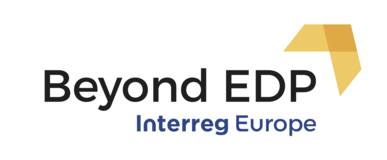Welcome to the Italian region of Umbria. It is a region in central Italy with 884.640 inhabitants, located in the heart of the peninsula. With an area of 8.456 km², it is the only region not located on the political or maritime borders of the State.
Its economy is characterized by the dichotomy between some bigger and most dynamic companies and the majority of the other companies generally of smaller size and which have the greatest difficulty in positioning themselves on a path of more sustained and longer-lasting growth. The entrepreneurial density is equal to 91 units for every 1000 inhabitants, a value higher than that calculated for central Italy (88) and for the whole country – Italy- (85). This greater propensity to entrepreneurship is explained above all by the noteworthy incidence of the primary sector (21%) which together with the commercial sector make up more than half of the entire entrepreneurial fabric. Referring to the Regional Innovation Scoreboard (2017), Umbria is ranking as a Moderate + Innovator, and innovation performance has increased over time.
RIS3 represents the strategic framework at the base of the research and innovation policies of the Umbria Region for the 2014-2020 period, realized through the implementation of the interventions foreseen by the Operational Programs of the Community Funds. In particular, RIS3 is at the heart of the new regional planning relating to the ROP ERDF 2014-2020 and it directly concerns the actions in the Axis I "Research and innovation" and in Axis II "Digital Growth and Citizenship", which represent a significant portion of the ROP (37.6% of the expenditure).
RIS3
The RIS3 priority areas that have been initially identified are those of: Agrifood, Life Sciences, Green Chemistry, Energy and Intelligent Factory/Aerospace Industry. Starting from the end of 2018 , the Strategy is going to be updated. Considering that during 2019 it will start the process of analysis and elaboration of the new strategy for smart specialisation related to next ROP 2021-2027 programming phase, the decision to proceed to the regional RIS3 updating is based on the necessity of a maintenance intervention of the specialized areas and technological trajectories as initially defined, in order to take in account lessons learnt from the first RIS3 application phase and the needs in terms of research and innovation demand (suitably filtered in the light of the current legislation and the strategies of the ROP) expressed both by the Business world and by Universities and Research organizations.
In general, Umbria RIS3 is the result of a shared and participated process initiated by the regional administration with the regional economic and social partnership, who have questioned the role of research and innovation in Umbria and have outlined a shared perspective of expected change, aimed at building the bases to create a sustainable competitive advantage of the region.
In particular, the governance system of Umbria RIS3 is organized into three levels:
- Steering Group, coordinated by Regional Administration with participation of representatives of University, Chambers of Commerce, Economic Sectors, Trade Associations
- Management Team, composed by the Managing Authority of ROP ERDF and external Experts
- Thematic Working Groups, one for each priority identified (Agro-food, Energy, Green Chemistry, Life Sciences, Smart Factory/ Aerospace industry) and composed by entrepreneurs and representatives of research and academic sector.
The involvement of local entrepreneurs in the five TWG activated was made according to their belonging to National and Regional Technology Clusters referring to the specific RIS3 priority areas identified. In this way, the entrepreneurs involved also can act as gate-keeper in their chain, disseminating information to other local entrepreneurs and pulling them into the implementation of RIS3.









